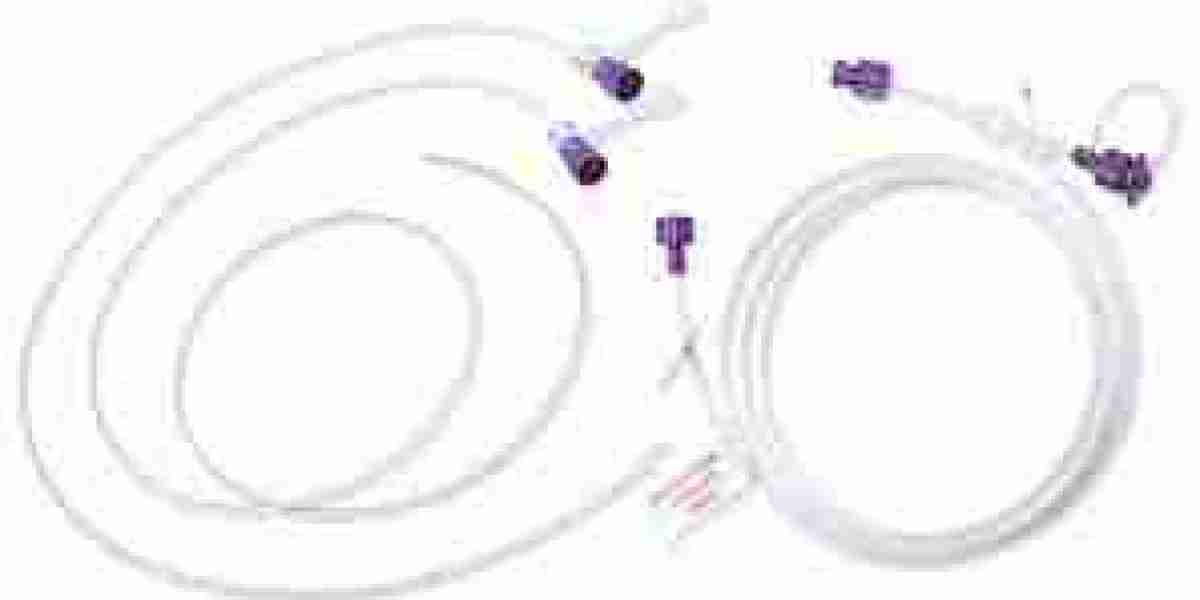The feeding tubes market has witnessed significant developments in recent years, owing to advancements in medical technology and an increased focus on patient-centric care. Feeding tubes, used to provide nutrition to individuals who cannot consume food orally, are vital for patients with chronic diseases, neurological disorders, or those recovering from surgery. These tubes have evolved in design, materials, and functionality, with innovations aimed at improving patient comfort, reducing complications, and enhancing the efficiency of nutritional delivery.
Key Developments in the Feeding Tubes Market
Technological Innovations: One of the major driving forces behind the evolution of the feeding tubes market is the rapid pace of technological advancements. Recent developments in materials, such as the use of biocompatible polymers, have enhanced the durability and flexibility of feeding tubes. These materials minimize irritation and inflammation, improving the overall experience for patients. Moreover, technological innovations like enteral feeding pumps and remote monitoring systems have led to more controlled and personalized nutrition delivery. These advancements ensure that the feeding process is more efficient, reducing the chances of errors or complications.
Increasing Prevalence of Chronic Diseases: The rise in the number of patients with chronic diseases such as cancer, diabetes, and neurological disorders has driven the demand for feeding tubes. Many of these conditions require prolonged nutritional support, which feeding tubes provide. The increasing incidence of conditions that impair swallowing or digestion, such as dysphagia or esophageal cancer, is a key factor influencing the market growth. Additionally, an aging population is contributing to a higher demand for feeding tubes as older individuals are more prone to conditions that affect their ability to eat or absorb nutrients.
Improved Patient Comfort and Convenience: Modern feeding tubes are designed to enhance patient comfort. Innovations in tube designs now include softer, more flexible materials and features that reduce discomfort during insertion and prolonged use. Enteral feeding systems have also become more compact and easier to use, improving patient convenience and adherence to nutrition plans. For instance, some feeding tubes are designed to be lightweight and discreet, allowing patients to maintain a sense of normalcy while receiving nutritional support.
Minimally Invasive Procedures: Feeding tube placement procedures have become increasingly minimally invasive. For example, the introduction of percutaneous endoscopic gastrostomy (PEG) tubes has made it possible to insert feeding tubes with less trauma to the patient. These less invasive techniques reduce the risk of infections and other complications, leading to faster recovery times and better patient outcomes. Additionally, the use of endoscopic guidance during tube placement has improved the accuracy and safety of the procedure.
Focus on Home Care Solutions: There has been a growing emphasis on providing feeding tube solutions for home care settings. As more patients prefer to receive care in the comfort of their homes, healthcare providers are developing home-based enteral feeding solutions. This includes portable pumps, home care training programs for caregivers, and telemedicine support for monitoring the feeding process. These advancements make it possible for patients to maintain a high quality of life while receiving necessary nutrition support.
Regulatory Approvals and Standards: The feeding tubes market has also seen stricter regulatory standards to ensure safety and efficacy. Regulatory bodies such as the FDA have established guidelines for feeding tube manufacturing and usage, ensuring that these products are safe for patients. Manufacturers are required to meet stringent quality control standards and undergo clinical trials before new feeding tube products are introduced to the market. These regulations aim to minimize risks and maximize the benefits of enteral nutrition therapy.
Emerging Markets and Global Expansion: The demand for feeding tubes is expanding globally, particularly in emerging markets where healthcare infrastructure is improving. As healthcare access increases in developing countries, the need for feeding tubes is expected to rise. Companies in the feeding tubes market are looking to expand their presence in regions such as Asia Pacific, Latin America, and Africa, where the prevalence of chronic diseases and malnutrition is growing. This presents both challenges and opportunities for market players as they navigate the regulatory and cultural landscape of these regions.
Future Outlook
The feeding tubes market is poised for steady growth, driven by advancements in technology, increased demand from aging populations, and growing awareness about the importance of enteral nutrition. The market will likely see more innovations in product design, including the development of more comfortable and efficient feeding tubes. As healthcare moves toward more personalized and home-based solutions, feeding tubes will play an increasingly integral role in patient care. Additionally, with the rise of telemedicine and remote patient monitoring, feeding tubes will continue to evolve, making it possible for healthcare providers to offer more customized care to patients outside of hospital settings.




